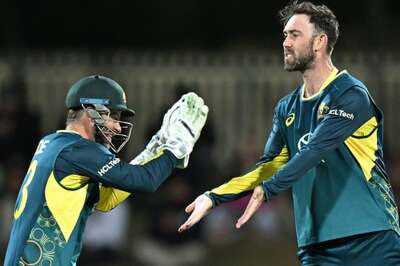
views
New Delhi: The Supreme Court’s 1,045-page-long verdict handing over the disputed land in Ayodhya to the deity Ram Lalla for the construction of a Ram temple described the illegal demolition of the Babri Masjid in 1992 by a Hindu mob as a “calculated” act designed to deprive Muslims of their place of worship.
The apex court noted that during the pendency of the lawsuits on the disputed land, "the entire structure of the mosque was brought down in a calculated act of destroying a place of public worship".
It also noted that the exclusion of the Muslims from worship and possession of the site took place on the intervening night in December 1949, when the mosque was “desecrated by the installation of Hindu idols”.
"The Muslims have been wrongly deprived of a mosque which had been constructed well over 450 years ago," a five-judge bench headed by chief justice Ranjan Gogoi noted in its judgment.
Despite the strong observations, the court held that the Muslim parties were not able to provide documentary evidence that only namaz and no other form of worship was offered in the mosque from the time of its construction in 1528 until 1857 and handed over the site to the Hindu plaintiffs. The Muslim parties will get a five acre plot on an alternative site for a potential mosque.
The court also accepted that there was proof that Muslims worshipped at the mosque from 1857 till 1949, when they were illegally ousted “through an act which was calculated to deprive them of their place of worship”.
This illegal demolition of the Babri Masjid in 1992 and the alleged criminal conspiracy behind it is a separate criminal case. After 27 years of often-derailed investigations and trial, the matter has finally reached the concluding stages of hearing in a special CBI court in Lucknow.
The SC’s observation on the illegal demolition was reminiscent of the commission of inquiry set up by the then P V Narasimha Rao government within 10 days of the demolition, which also had gave the finding that entire demolition was carried out in an "orchestrated" manner.
The then Congress government had set up a one-man inquiry commission headed by Justice M S Liberhan, who was then the sitting judge of the Andhra Pradesh High Court.
However, Justice Liberhan gave full time to the commission only after his retirement as judge and submitted the report after 17 years during which its term was extended 48 times. He submitted the report in June 2009, during the tenure of Manmohan Singh as the prime minister.
After examining the deposition of top leadership of the time, including former prime ministers PV Narasimha Rao and VP Singh, BJP patriarch L K Advani, Murli Manohar Joshi, Kalyan Singh, former Uttar Pradesh Chief Minister and other leading lights of the Mandir movement, the Liberhan Commission in its report held the then top leadership of BJP and Sangh Parivar (RSS, VHP and Bajrang Dal) culpable for the incident of December 6, 1992.
The Commission had concluded that the factual matrix of the case yields "indisputable evidence that lured by the prospect of power or wealth, a rank of leaders emerged within the BJP, RSS, VHP, Shiv Sena, Bajrang Dal etc. who were neither guided by any ideology nor imbued with any dogma nor restrained by any moral trepidation".
"To sum up, December 6, 1992 saw a state of Uttar Pradesh unwilling and unable to uphold the majesty of the law. The ennui flowed from the very office of the Chief Minister (Kalyan Singh) downwards and infected the state's minions down till the bottom. The state had become a willing ally and co-conspirator in the joint common enterprise to announce the revival of a rabid breed of Hindutva, by demolishing the structure they had denounced as a symbol of Islam," the commission said.

















Comments
0 comment